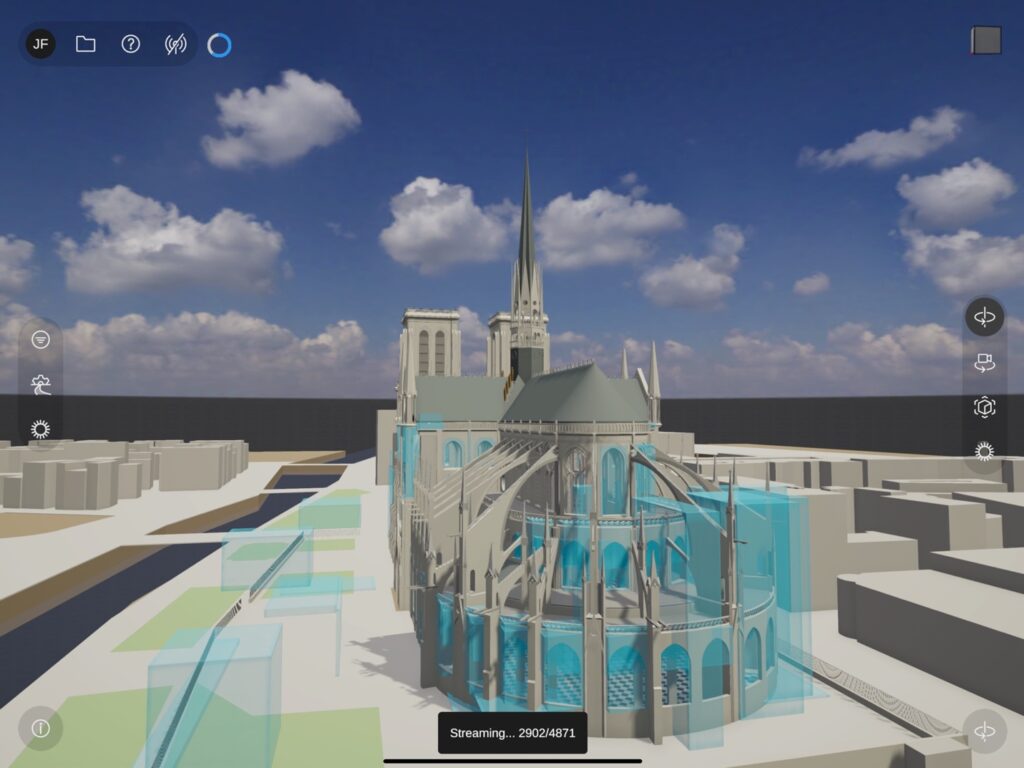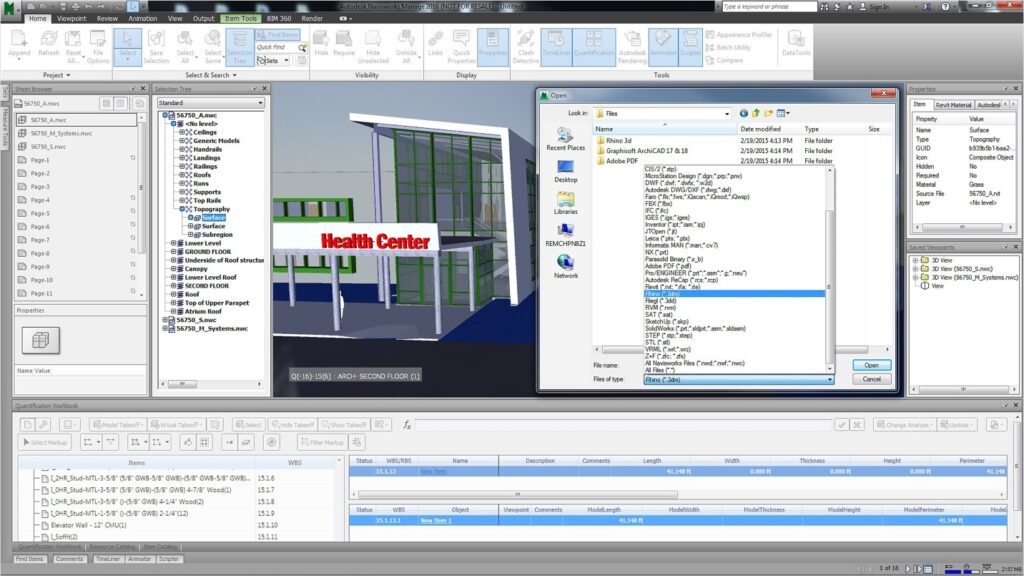
In 2017, Autodesk announced plans to collaborate with Unity to create a link between Unity and Revit’s BIM models. The first result of that collaboration was Unity Reflect, which started shipping in November 2019.
Unity Reflect creates a link between Revit and Unity enabling the creation of 3D visualizations of Revit projects in Unity Reflect. Users can define what information was synchronized between the two apps and can then render it, create walkthroughs, demonstrations, working models, etc. It has a live link between the two entities so when data shared between the apps changes in the Revit model, it will update in the Unity model. The collaboration between Unity and Autodesk has continued and the companies have added new features such as Sun Study and BIM Selection as well as support for Rhino and Sketchup. Unity Reflect has also been updated with support for cloud hosting and Android support for mobile devices.
In the Covid summer of 2020, Autodesk and Unity announced that Autodesk’s Navisworks also supports Unity Reflect giving users several avenues to combine different model types to visualize an entire project. This is a particularly intriguing option for visualization because Navisworks supports over 60 formats. Maybe they’re not all yet enabled in Unity Reflect and maybe not all even make sense, but Navisworks opens a big wide door of opportunity data exchange as we’ll talk about later.

In the fall of 2020, Autodesk and Unity announced support for Autodesk’s BIM 360 for Unity Reflect, and with that upgrade they’ve expanded support to IFC, FBX, Civil 3D, Infraworks, and also adding support for AR and VR including 1:1 visualization.
Autodesk’s BIM 360 has several options that allow users to connect Revit models in the cloud from different offices and different geographies.
Autodesk and Unity say their goal is to create a platform that connects all project members across geographies and across devices. They’re getting there, and with all the options they’re opening up with Navisworks, BIM Cloud, and different formats, they’re building connections that can be used by third-party companies.
In December 2020, Swedish Autodesk reseller Symetri revealed their tool which was developed in collaboration with Unity and enables Inventor models go through Unity Reflect for use in AR/VR applications. Sovelia started shipping in December 2020. Developer Martin Saldert, Symetri’s visualization expert, was formerly at Autodesk before joining Symetri. Saldert came to Autodesk through the acquisition of Opticore in 2007 which was used to develop Showcase, Autodesk’s competitor to Bunkspeed and Luxion’s Keyshot, and a forerunner to Adobe’s Dimension visualization tool. Symetri has made a video to demonstrate their latest product, Sovelia. (The demo requires a signup but the company swears they won’t call.)
In it, Saldert says Symetri’s customers using Inventor have been frustrated in getting their models out to AR/VR applications. The usual workflow involved exporting to 3ds Max and then to Unity. Symetri has developed an Exporter for Inventor that can then output the model to the Sovelia server that can be hosted on the user’s client or in the cloud and includes the Sovelia Viewer for visualization and AR/VR. The Sovelia tool is 790 Euros, which reflects the cost of the exporter. The Symetri Exporter can also send exported models out to Unity Pro, if customers want to create animations, or interactive applications for VR/AR, demonstration, or training. Sovelia can work with all the options now working in Unity Reflect so users can combine data from Revit and Inventor and export through Navisworks.
The larger story that’s being told by this collaboration is that Unity Reflect is becoming more than a BIM tool thanks to the support for multiple formats. It is a visualization tool for a variety of applications and communities of developers.
What do we think?
It’s good to catch up on data from Unity and Autodesk as their collaboration deepens. It seems there’s really no end to where this work can go. Unity started with a targeted tool for exporting Revit data to the Unity Engine to create further explorations of data and visualizations but clearly, Autodesk and Unity see new opportunities ahead and not necessarily with each other.
Autodesk has also announced plans to work with Nvidia on Omniverse. This work will follow two paths, Omniverse for content creation and for professional users including AEC and Manufacturing. Omniverse is being built on USD, which is the underlying format for the AR format USDZ. USD was created by Pixar as an exchange format for creative content assets, so its broadest support is among content creation tools in entertainment. However, the Autodesk and Unity collaboration has demonstrated the pull there is for these tools in AEC. Symetri is highlighting the demand in manufacturing. It will be interesting to see what paths Autodesk and Nvidia will favor for Omniverse. We’re pretty sure those paths are being forged now. You’ll note, by the way, that Unity and Autodesk first announced their intention to collaborate in 2017. This kind of work takes time.
We’ll also be interested to see if new partnerships like that of Symetri and Unity with access to new markets.





